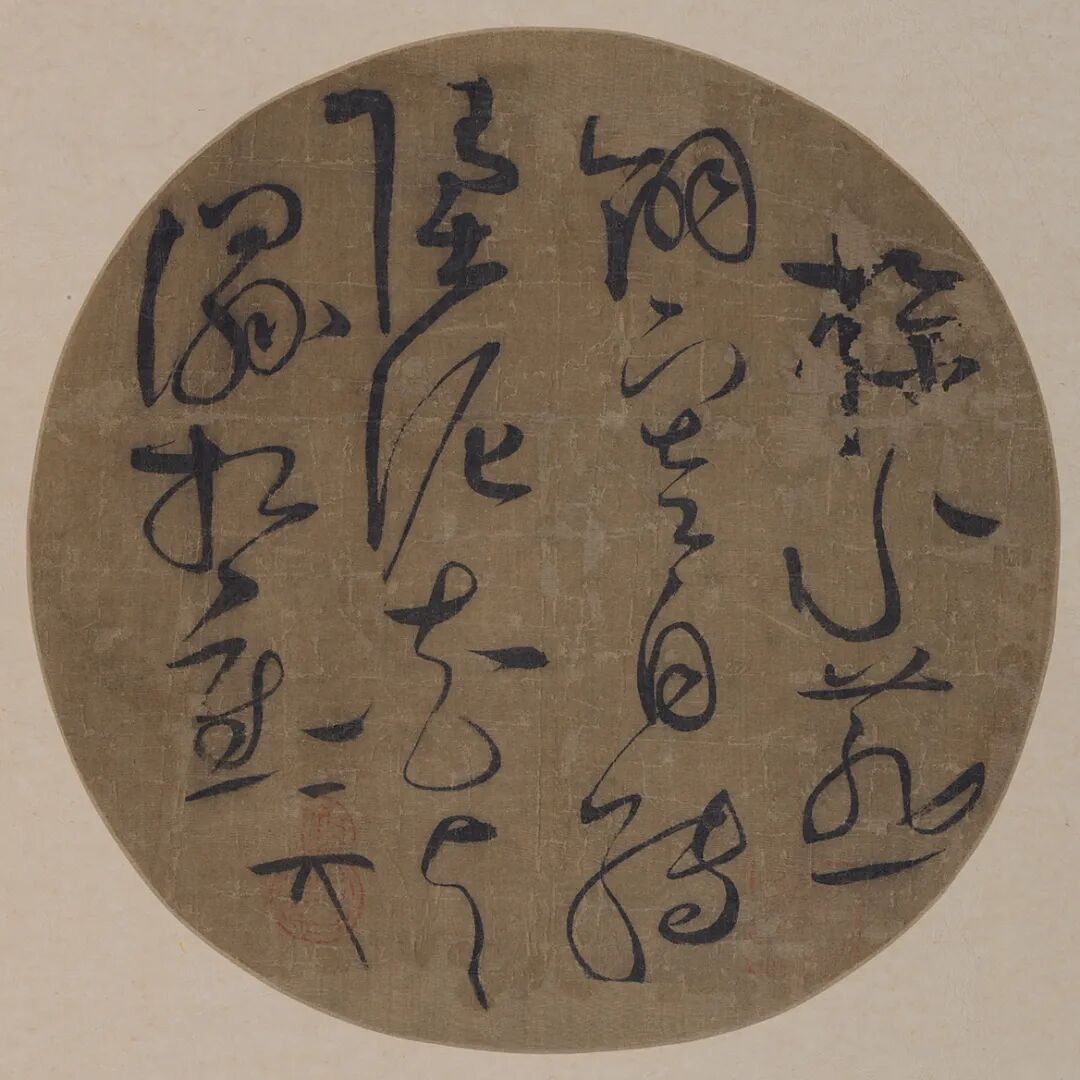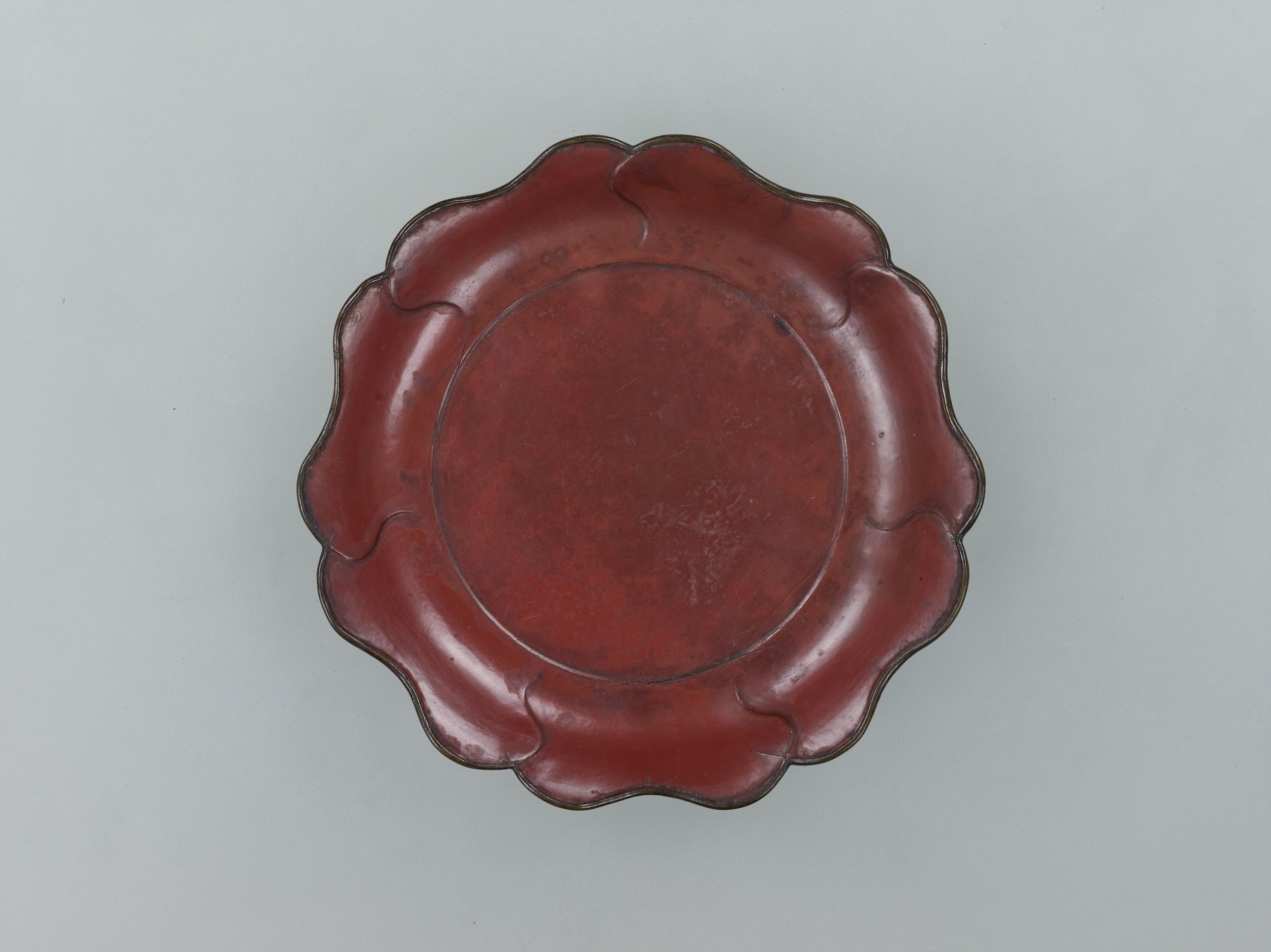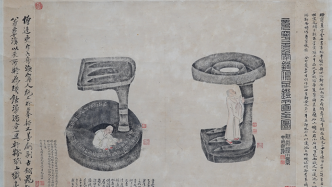
"Walking with the Times: The Art of Jinshi Transmission" is on display at the Shanghai Museum these days. For the first time, the exhibition focuses on the intangible cultural heritage of the Chinese nation - ancient gold and stone rubbings. Through the exhibition of ancient gold and stone rubbings and some real objects in the Shanghai Expo, it conveys to the public the beauty of the art of spreading ink and paper rubbings. Among them, the "Three Treasures of Bronze Wares in China" The Yu Ding, Dake Ding, and Mao Gong Ding were unveiled together in the form of full-size rubbings; Wu Dacheng's "Munzhai Collection Ancient Picture" was exhibited in comparison with the real thing for the first time.
Introduction and appreciation of some key cultural relics developed in The Paper Art Special Issue.
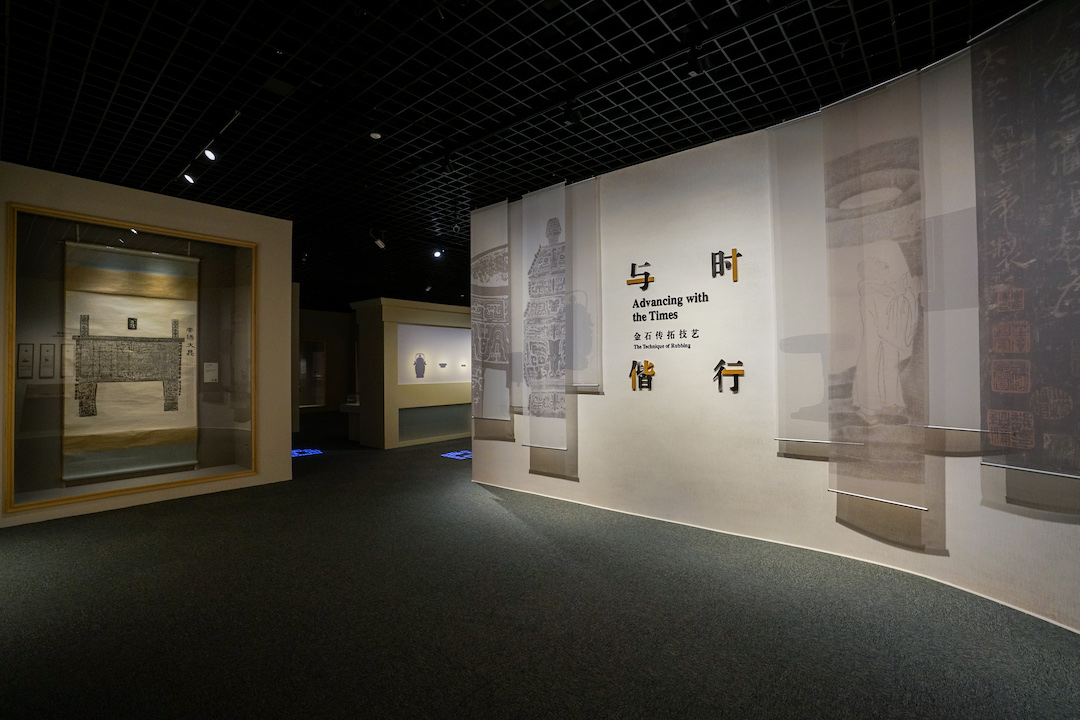
exhibition site

exhibition site
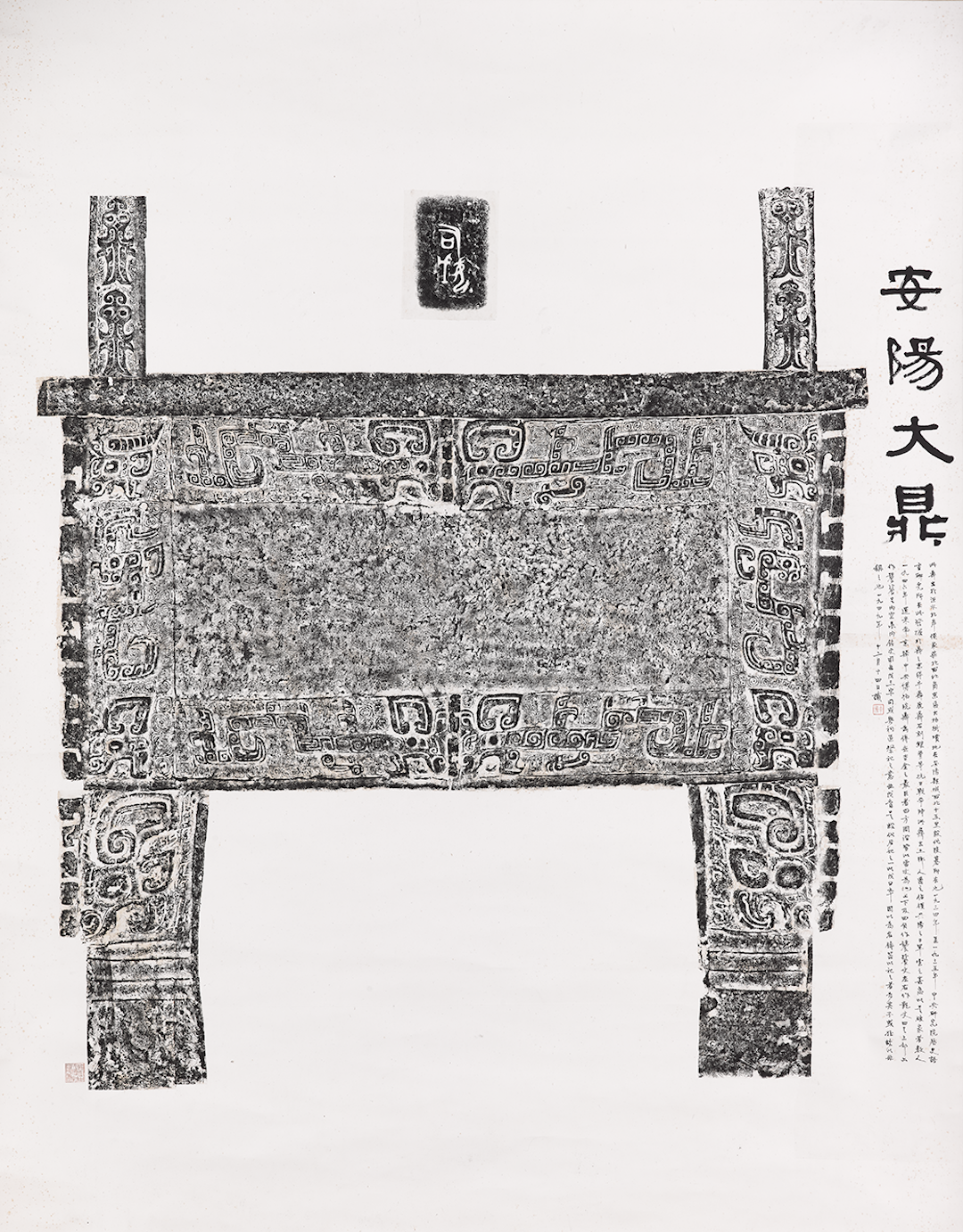
Rubbings of Simuwufang Ding Ding, the second half of the 1940s, the heart of the painting is 164.0 cm in length and 129.0 cm in width, collected by Shanghai Museum
Simuwufang Ding (also known as Houmuwufang Ding) is a late Shang Dynasty bronze ware unearthed in March 1939 in Wuguan Village, Anyang, Henan. This tripod is majestic in shape and is the largest and heaviest ancient bronze ware unearthed in my country. It is now in the National Museum of China.
In the middle of the rubbings is the full front of the Fang Ding, above the mouth of the tripod is a rubbing of the inscription "Simuwu" on the inner wall of the vessel, on the upper right is the inscription "Anyang Dading", on the bottom is the inscription and postscript, and at the end of the inscription is the seal of "Zhongbo", the rubbing is near the foot of the tripod on the lower left It is stamped with the seal of "National Central Museum Collection". The rubbings have traces of splicing. Using the paper-splitting rubbing method, each part of the Fang Ding was first rubbed out in turn, and then mounted and combined. This is also a common expression technique in the rubbings of inscriptions and stone artifacts.
Regarding the date when this rubbing was made, the inscription says that Fang Ding was transported to Nanjing in 1946, and the date of inscription and postscript is December 14, 1949. Therefore, the rubbing was made during this period, which should also be the time when Simu Wu Fang Ding was born. The first complete rubbings made after unearthed in 1939. In addition, there is no signer for the inscription and postscript. According to the analysis of the content and handwriting, it is speculated that it was written by Mr. Zeng Zhaoyu of the National Central Museum.
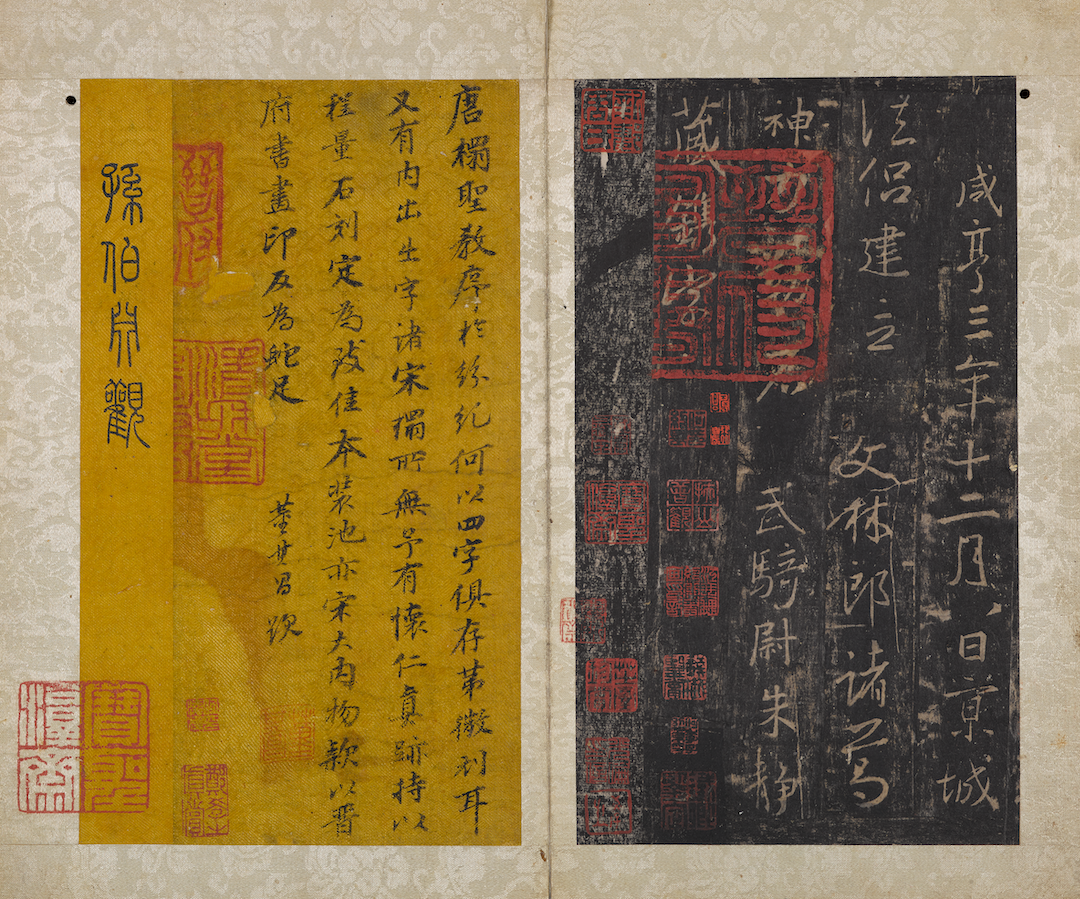
Collection of Wang Xizhi’s Tripitaka Preface Rubbings, Northern Song Dynasty (960-1127) 25 pages, single page 24.7 cm in length and 14.2 cm in width, collected by Shanghai Museum
The original stele was collected from Wang Xizhi's calligraphy by Shamen Huairen for more than 20 years, and carved into a running script inscription in the third year of Tang Xianheng (672). Standing in Hongfu Temple in Chang'an, it is now in the Xi'an Forest of Steles Museum. This volume belongs to the inner palace of the Song Dynasty, and has been collected from Jinwangfu, Dong Qichang in the Ming Dynasty, Wei Shaolian, Guo Shangxian, Tiebao, Sun Xingyan, Zhou Zupei, He Shaoji, He Shaoye, He Shaojing, Gu Chun, Zhou Shouchang, etc. in the Qing Dynasty.
In this book, most of the last strokes of the six-line "correction" character are intact, the fifteen-line "ci" character is complete, the twenty-one line "Yuan" character is complete, and the 23-line "inner out" and "out" characters are still in the lower part, and the meaning of the calligraphy is different. Lost, it should be the rubbings of the Northern Song Dynasty. Wang Zhuanghong once pointed out that this book is a light ink rubbing rubbing. Because the rubbing method is good for highlighting the subtle details of brushwork, many Song Dynasty posters are made of rubbing, such as Song Tuo's Five-Character Lost Version Dingwu Lanting in the National Palace Museum in Taipei and Song Tuo Tea in the Shanghai Library. Record" and so on. However, the "Preface to Jiwang Shengjiao" handed down from the Northern Song Dynasty is mostly inscribed in thick ink, and it is very rare to inscribe in light ink. Therefore, He Shaoji wrote in his postscript: "Liu Li is frustrating, reckless and unrestrained, and there is a tendency of dragons leaping and tigers lying down. You don't need to take the exam, you can know it as a god. Later rubbings are probably like frozen flies, with many distortions." He Shaoye also called it "Paper and ink are old-fashioned, and the spirit is pure and simple."
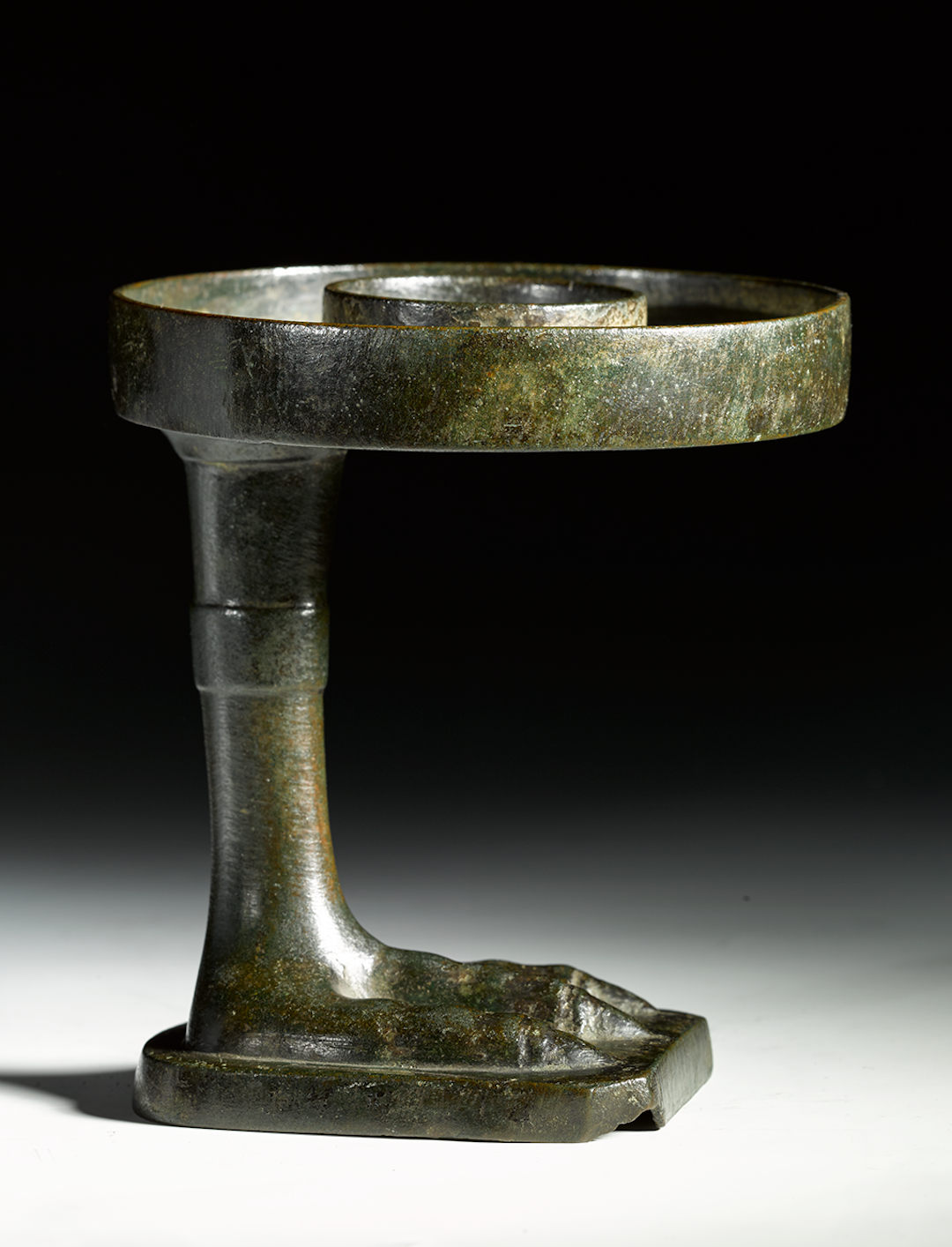
Wild Goose Foot Lamp in the First Year of Jingning, the first year of Jingning in the Western Han Dynasty (33 years ago), 14.6 cm high and 12.8 cm in diameter, donated by Mr. Li Yinxuan and Ms. Qiu Hui, collected by Shanghai Museum
The whole device is composed of lamp panel, goose feet and irregular base. The joints of the goose feet are lifelike, and the webbed claws are powerful. There are four inscriptions engraved on the outer bottom of the lamp panel. From the inscriptions, we can know that this lamp was made in the first year of Jingning (33 BC) and belonged to the Queen's Palace (Zhonggong). Popular, it is one of the commonly used lamps in the palace.
According to the inscription and postscript of Badasheng Daoguang Xinchou Year (1841) in "Ticking the Lamp Picture", this vessel was originally collected by Ma Yuelu (1695-1775) and Ba Weizu (1744-1793), and later returned to Cheng Hongpu (word Mu'an, Haoyintian, a native of Huizhou, lived in Wuzhong, a collector of bronzes and rare books). From the 16th year of Daoguang (1836) to the 23rd year of Daoguang's reign (1843), Cheng invited the monk Liuzhou many times to pass on rubbings to more than a thousand pieces of bronzes for him (see Zhongwei's "Gold and Stone on Paper-Episode Shantuo Guolu" (Part 1) )" page 58), the prestigious "Ticking the Lamp" was born during this period.

Liu Zhoutuo Chen Geng painted "Ticking the Lamp Picture" Qing Dynasty (1644-1911) The painting center is 87.0 cm long and 51.5 cm wide, collected by Shanghai Library
Shi Dashou (1791-1858), with the common surname Yao and style name Liuzhou, was born in Haichang (now Haining), Zhejiang Province, and became a monk at the age of 17. Liuzhou is proficient in poetry, calligraphy, painting and seal, and is especially good at spreading and rubbing. He is one of the representatives of the whole shape rubbing skill. "Ticking the Lamp" is his most famous work.
This "Ticking the Lamp Picture" was made by Liu Zhou and painted by Chen Geng. In the center of the volume is the full-shaped extension of the Jingning Yan's Foot Lantern, juxtaposed upside down and upright. On the body of the upside-down lamp, there is a miniature figure of Liuzhou, leaning over the bottom of the lamp panel to pick and wash the inscriptions. Standing upright on the lamp, the small statues of six boats stand on the lamp's feet, making a caressing appearance. This picture creatively combines the full-scale extension of utensils and figure painting in one scene, as if a real person is placed in it, lifelike. On the right side of "Ticking the Lamp", there is an inscription in seal script of Liuzhou, a full-scale extension on the left side, the inscriptions and postscripts of Liuzhou and Badasheng, and the inscriptions and postscripts of Xu Naichang on the right side of the scroll.
The full-scale extension technique shown in "Ticking the Lamp" is amazing. The inscription on the upside-down lamp panel on the left is not a complete circle, but composed of two incomplete semicircles. There are traces of line drawing on the edge. This picture has been reserved for painting at the beginning of creation. When transmitting the inscription on the lamp panel, the corresponding line drawing is selected and divided into at least two transmissions. The overall ink color is well-proportioned, and transmission is difficult. . "Ticking the Lamp" is different from the traditional traditional theory of deep ink-receiving parts and light-colored recessed parts, except that the overall ink color of the inscription is different, and the overall emphasis is on the relationship between light and shade in the painting. become. It can be seen that the full-form biography was more of a literati interest at that time, and there was no strict requirement on whether the content was fully displayed. In the early days of the appearance of full-shaped extension techniques, there was such a complete fusion of ideas and techniques, no wonder it became a masterpiece at that time.

Maogong tripod in full shape Tuoqing (1644-1911) Painting heart 153.0 cm in length and 82.0 cm in width Collected by Shanghai Museum
This piece is the mid-term work of Chen Jieqi's rubbings of the Maogong Ding. The upper part of the Maogong Ding has the inscription on the left and right papers, which are in the shape of a foot boot. Because the inscriptions of Maogong Ding are cast all over one side of the inner wall, it is extremely difficult to spread or mount them. Therefore, there have been various attempts such as four-petal rubbings, upper and lower two petals, and left and right boots. This rubbing was originally in the style of left and right foot boots, and some characters overlapped. It was not until the inscription transmission and rubbing techniques of Mao Gongding in the late Qing Dynasty and early Republic of China became more mature and perfect that this phenomenon gradually disappeared.
The body of this rubbing Maogong Ding adopts Chen Jieqi’s representative full-shaped paper-splitting method. The parts of the body are divided into papers and rubbed in stages. The foot of the Maogong Ding is in front, and the root of the leg overlaps with the belly of the vessel. When mounting, the rubbings of each part are assembled into a complete figure according to the sketch, and the rubbing is exquisite.
Chen Jieqi (1813-1884), courtesy name Shouqing and nickname Luzhai, was born in Weifang, Shandong. A famous epigrapher in the Qing Dynasty. Good at appreciating, especially ink rubbing skills, and his hand rubbings of bronzes, pottery, seals, stone carvings and other rubbings are well-known.

Wu Dacheng Minzhai Collection Ancient Picture Qing (1644-1911) Volume 1: The heart of the painting is 41.5 cm in length and 1462.0 cm in width, collected by Shanghai Museum

Wu Dacheng Minzhai Collection Ancient Pictures Qing Dynasty (1644-1911) Volume 2: The heart of the painting is 41.5 cm in length and 1696.0 cm in width, collected by Shanghai Museum
The volume of "Mingzhai Collection of Ancient Pictures" is composed of paintings and ink extensions, and consists of two volumes. The first volume was drawn by Ren Xun, while the second volume was portrayed by Hu Qinhan, with Lu Hui filling in the scenes.
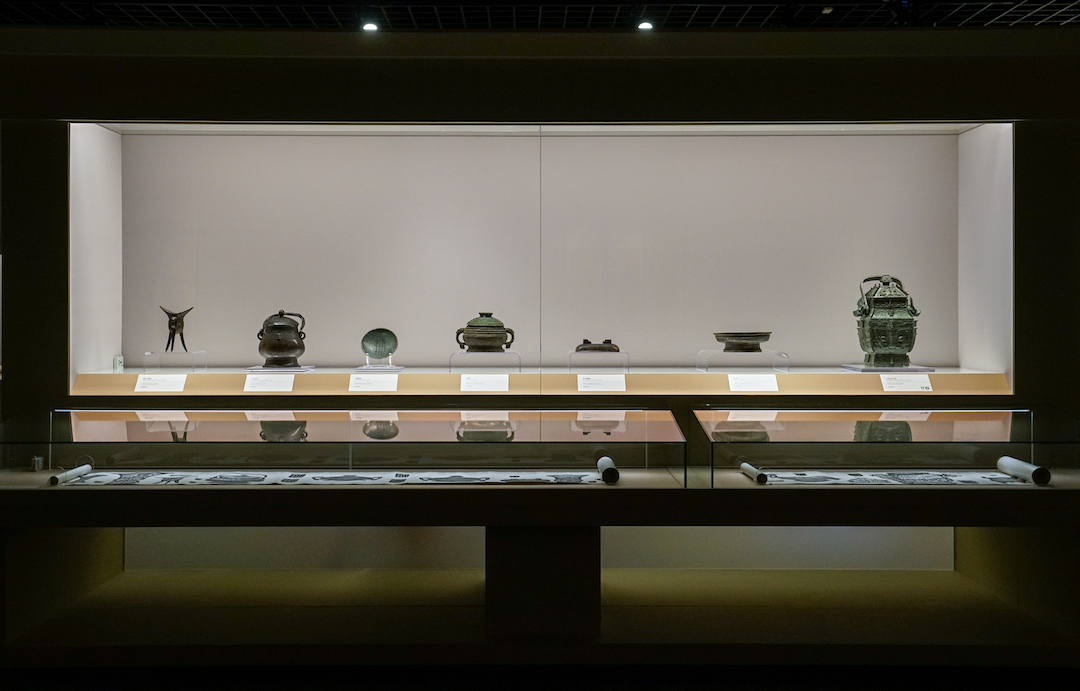
exhibition site
Mingzhai is the name of Wu Dachen, a late Qing epigrapher, and originated from the Western Zhou Mingding (also known as Shimeiding, now in the Nanjing Museum) he obtained. Wu Dacheng (1835-1903), styled Qingqing, named Hengxuan, etc. A native of Wu County, Jiangsu Province. Tongzhi seven years (1868) Scholars. The official went to the governor of Hunan. He is good at seal and seal, and can also paint. He is good at gold, stone, writing, etc., and has a rich collection of calligraphy, painting, and ancient bronzes. There are "Munzhai Poetry and Prose Collection", "Munzhai Collection Gulu", "Guzhubu", "Ancient Jade Picture Research", "Hengxuanjijinlu" and so on.
Wu Dacheng has a very rich collection of gold and stones. Through the scenes of Mingzhai painted by Ren Xun and others, one can imagine the appearance of that day. The long volume attached to the volume contains the full-scale rubbings and inscription rubbings of the gold and stone cultural relics in Wu's collection, and there are notes on Wu Dacheng's research and interpretation, as well as the shape, decoration and inscription of the vessel, which has extremely high academic reference value.
The originals of the bronze rubbings collected in "Munzhai Collection Ancient Pictures", such as Deng Boyu cover, Xian Gui cover, Xian Gui, Lu Fu Jiajiao, etc. are now in the Shanghai Museum, and the original and the rubbings can be compared with each other.

Large Yu Ding Full Shape Tuoqing (1644-1911) Painting center 198.0 cm in length and 90.0 cm in width Collected by Shanghai Museum
The Great Yuding Ding is a bronze vessel from the Kangwang period of the Western Zhou Dynasty. It was unearthed in Qishan County, Shaanxi Province in the early years of Daoguang in the Qing Dynasty. It was handed over to Pan Zuyin after several collections. In 1951, Pan Dayu, a descendant of the Pan family, donated the Da Ke Ding and Da Yu Ding to the country. In 1952, they were collected by the Shanghai Museum and became one of the most important collections of the Shanghai Museum. In 1959, the Great Yu Ding was exhibited in the China History Museum (now the National Museum of China).
On the top of the rubbings is the inscription of the big Yuding, and on the bottom is the full-shaped rubbings. The inscriptions of the Great Yu Ding are divided into Guanzhong rubbings and Jingshi rubbings according to the time when they were passed on. The rubbings are called "two white books". In the late capital rubbings, the lower half of the inscriptions were clearer and easier to recognize after the inscriptions were removed from the soil and rust. The most obvious feature is that "two" has one more stroke and becomes "three", so it is also called "three white books". The inscriptions on the top and bottom of this rubbing are both "three white books".
The body of the big Yuding tripod is tilted to the left in full shape, and the rear foot is slightly tilted to the right. It adopts a slightly side-view perspective. The slightly side perspective can just show the inscriptions inside the tripod and the inner and outer decorations on both sides of the tripod ears in the full-shaped extension. This is a common composition of the full-shaped rubbings of tripods in this period. The decoration of the legs of the legs of the tripod overlaps with the bottom of the belly of the vessel. The full-shaped rubbing method should be used. The ears and feet of the tripod are rubbed on the whole paper, and the abdomen and plain face are flattened in the later stage. The full-scale extension is slightly larger than the original. Wu Dacheng explained it, and Wang Tongyu inscribed it.

Zhao Zhiqian and Cheng Shouqian, "Qiju Yannian Picture Axis", Qing Dynasty (1644-1911), the center of the painting is 97.6 cm long and 47.2 cm wide, collected by Shanghai Museum
The pattern of Jijin offering flowers prevailed in the Bogu pictures of the Ming Dynasty. By the appearance of the full-shaped extension in the Qing Dynasty, it changed the tradition of using a brush to depict bronze ware in the past, and made the image of the bronze ware more realistic and elegant through transmission and extension. This work is a collaboration between Zhao Zhiqian and Cheng Shouqian. Cheng Shouqian made the full-scale extension, and Zhao Zhiqian added flowers.
Zhao Zhiqian (1829-1884), originally named Yifu, later changed to Uncle 㧑, nicknamed Lengjun, Bei'an, etc., was born in Shaoxing, Zhejiang. In the ninth year of Xianfeng (1859), he was elected, and he once knew Poyang, Xinfeng, and Nancheng counties. Calligraphy is good at the Beibei stele, and it goes deep into the bone marrow when it comes to ancient times, and the brushwork is smooth and plump. Painting also emphasizes the raw and clumsy interest of gold and stone. The flowers, leaves and branches in this picture are simple and clumsy in color, and the brush is used in combination with squares and circles. It is simple, thick and ancient, with the meaning of seal script and official script.
Cheng Shouqian, courtesy name Liujie, was born in Shexian County, Anhui Province. Cheng Hongpuzi. The family is rich in gold and stone collections, and is good at developing gold and stone Yi wares. Cheng Hongpu had a very close relationship with Liuzhou. He once asked Liuzhou to make a thousand kinds of gold and stone tools in the Tongguzhai collection at home. Today, the full-shaped extensions made by Liuzhou can still be seen as the author of Cheng. The more famous ones are in the collection of Zhejiang Provincial Museum. "Ticking the Lamp" Vol. In the picture, the Yi ware with chrysanthemum cuttings was made by Cheng Shouqian, and the side seal is "Liu Jie Hand Ruo Yi Ware", and Liu Zhou also has the seal of "Liu Zhou Hand Ruo Yi Ware", which shows the meaning of admiration.

Su Jian Kuanying Tuobo Ancient Map (four axes), the twenty-eighth year of the Republic of China (1939), the center of each painting is 123.0 cm in length and 35.0 cm in width, Shanghai Library Collection

Su Jian Kuanying Tuobo Ancient Map (four axes), the twenty-eighth year of the Republic of China (1939), the center of each painting is 123.0 cm in length and 35.0 cm in width, Shanghai Library Collection

Su Jian Kuanying Tuobo Ancient Map (four axes), the twenty-eighth year of the Republic of China (1939), the center of each painting is 123.0 cm in length and 35.0 cm in width, Shanghai Library Collection

Su Jian Kuanying Tuobo Ancient Map (four axes), the twenty-eighth year of the Republic of China (1939), the center of each painting is 123.0 cm in length and 35.0 cm in width, Shanghai Library Collection
Yingtuo refers to the technique of using brushes instead of rubbings, imitating the effect of rubbings on paper with brushstrokes, and drawing the effect of rubbings in the form of painting. Wang Fu'an accompanied each picture with a copy of the inscription, and added an annotation or commentary in official script.
The content of this four-axis Yingtuo is respectively the four instruments of 斝, 甗, 卣, and 盉. The overall outline of the utensil is clearly drawn, the decorations inside the utensil are all drawn, and different ink colors are used on the edge and plain surface of the utensil to express the effect of light and shadow. Yingtuo's ink color style has departed from the traditional ink painting, and the performance of light and dark light and shadow is more similar to that of plane production and Western sketches. It can be seen that the creation at this time was influenced by the habit of making full-scale extensions and the concept of Western art.
Su Jiankuan (1878-1942), a man with a strong character, was nicknamed Kaopanzi. People from Zhenjiang, Jiangsu. Good at calligraphy, painting and seal cutting, You Jingying expanded the whole shape of Zhongding and Yi vessels. Moved to Shanghai in 1938.
Wang Fu'an (1880-1960), formerly known as Ti and Shouqi, with the word Weiji, the name Fu'an, and later the name Xing. People from Hangzhou, Zhejiang. Calligrapher and seal carver, one of the founders of Xiling Yinshe. Settled in Shanghai in 1930.
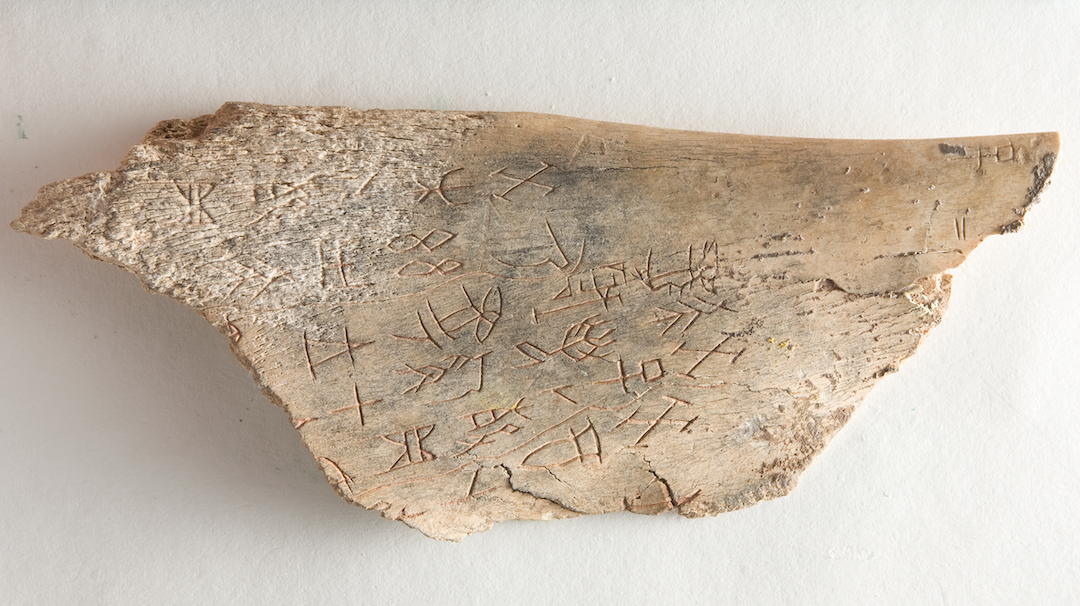
Ox blade with painted and inscribed words in the late Shang Dynasty (13th century BC - early 11th century BC) with a maximum length of 18.0 cm and a maximum width of 7.5 cm, collected by Shanghai Museum
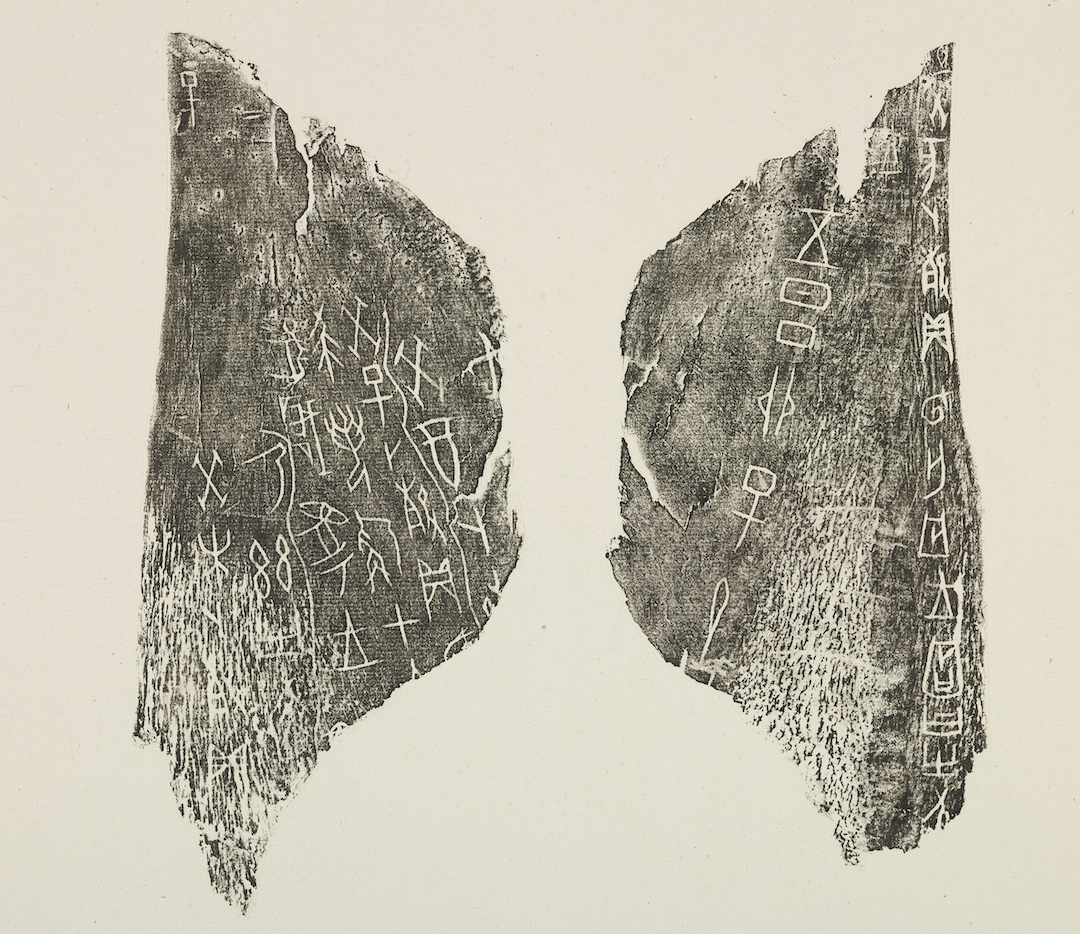
Rubbings of ox blades with painted and inscribed words in late Shang Dynasty (13th century BC - early 11th century BC) with a maximum length of 18.0 cm and a maximum width of 7.5 cm, collected by Shanghai Museum

Rubbings of ox blades with painted and inscribed words in late Shang Dynasty (13th century BC - early 11th century BC) Shanghai Museum bone collection (upper part), which can be combined with the Palace Museum bone collection (middle part) and Tsinghua University bone collection (bottom part)
This is the ox shoulder blade used by the king of Shang for divination. The upper part remains, and the front and back sides are engraved with oracle bone inscriptions.
After unearthed, oracle bones are often broken and scattered, and the inscriptions on oracle bones are so thin that they are often difficult to distinguish with the naked eye. Mo Tuo can make the inscriptions clear and detailed. Using rubbings, scholars can restore them by patchwork. For example, this version of the Shanghai Museum’s bone collection (upper part) can be combined with the Palace Museum’s bone collection (middle part) and Tsinghua University’s bone collection (bottom part) to restore rare historical materials such as a car accident record of a Shang king and a rainbow record of the Shang Dynasty, which are extremely precious .

Oval Sheng Qin (221 BC - 207 BC) 6.8 cm high, 10.5 cm long, 23.5 cm wide, collected by Shanghai Museum

Oval rubbings, Qin Dynasty (221 BC - 207 BC), 6.8 cm high, 10.5 cm long, 23.5 cm wide, collected by Shanghai Museum
Like Fangsheng, the oval liter was a volume measuring tool in the Qin Dynasty, and it is a handed down tool. It is oval in shape, with a straight mouth to close the abdomen, a flat bottom, and a tube handle with a flat top and a round bottom at one end. The imperial edict of the twenty-sixth year of Qin Shihuang (221 BC) and the imperial edict of Qin II are engraved on the outer wall.
The content of the original three-dimensional ellipse was flattened by spreading, and the edict on the outer wall was divided into left and right sides, and the last column of text in the edict of Qin II was expanded on the bottom.

exhibition poster
(Note: The pictures and texts in this article are compiled according to the catalog of the special exhibition "Walking with the Times: Jinshi Chuantuo Skills", and the copyright belongs to the original author)

